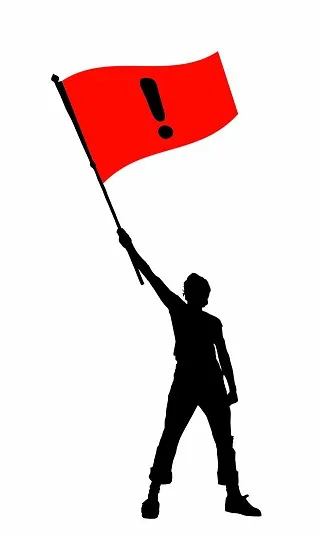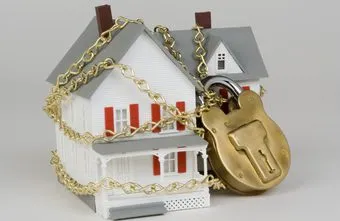
There's a lot of discussion and debate with HBD.
And if I'm being honest I talk about it too much so I'll try not to rehash anything that I've already been over a dozen times. However, as the biggest threat vector I do believe it is worth isolating the debt ratio and expanding on the current ideologies.
Is HBD even debt?
What is the "debt ratio"? In reality it is simply the ratio between Hive tokens and HBD tokens. However, in this case Hive is measured in dollars; using witnesses as oracles to provide the price feed. And thus, the debt ratio is the ratio between the dollar value of all Hive in existence vs the total amount of HBD in existence (minus the @hive.fund). We conveniently assume that 1 HBD = 1 USD in this case, which is fine but also noteworthy.
But does that make sense?
HBD is considered the debt of Hive because HBD can be converted into Hive when the peg drops lower than $1. This conversion process dilutes the value of Hive by printing more Hive tokens when HBD is lacking organic demand and users are trying to cash out. In theory every single HBD could be converted back into Hive, and so there is a certain expectation that the Hive network owes 'real' money (aka collateral) back to the users when it issues HBD.
That's why this concept is so problematic.
If you go to a bank and take out a loan, the bank is basically going to print USD out of thin air (using collateral reserves), give you that money, and then charge you interest with the expectation of eventually being paid back with interest on top to turn a profit.

Secured vs Unsecured
Secured debt is debt that is issued to buy something very expensive that has value. That 'object' becomes the collateral for the loan, which in turn secures that loan for the bank. 99% of the time these loans are going to be secured by either a car, house, or business. If the borrower (you) doesn't pay back the lender (bank) then the lender is legally allowed to commandeer your collateral. It is in this way that we might interpret the situation as the lender technically owning the collateral until the debt is fully paid off.
The expression, "He bought the farm," (meaning to die) comes from instances where the farmer's life insurance was able to completely able to pay off the debt they owed to the bank in exchange for the property. With the word 'mortgage' itself literally translating to 'death pledge'
An unsecured debt is one that has no intrinsic collateral. A credit card is unsecured debt because the only collateral provided is a pinky-promise and perhaps a credit score. When the only thing backing the debt is the reputation of the borrower we call it unsecured (because overt slavery is technically illegal).
Funny story: the money you put into the bank is unsecured.
When you deposit money in a bank, you surrender the legal title to the cash and it becomes the bank's asset. As a result, you become an unsecured creditor to the bank. That is, the bank doesn't give you any security as protection in case it defaults.
So how is HBD debt?
- Who is the debt owed back to?
- How much interest is owed?
- Who is the borrower?
When we ask these basic questions (that should be easily answerable) it becomes clear that HBD is arguably not debt in a lot of different ways. If anyone is the borrower it is the network itself. Hive is borrowing the money. And they are borrowing that money from... the user? However that's not exactly true because this "debt" only needs to be paid back in the event that an HBD to Hive conversion occurs, which will never happen for the principal amount of tokens (floor demand). Meaning millions upon millions of this "debt" is never going to be paid back by design, making it not debt, but rather new money in the form of a derivative.
How much interest is owed?
When Hive issues HBD it is making a promise that users can convert each HBD for $1-worth of Hive. The interest rate on this conversion is 0%. So again, framing HBD as debt makes absolutely no sense because issuing a loan at 0% interest rate by default makes no business sense. That's not how debt works.
What is the debt ratio for fractional reserve banking?
In the legacy banking sector we're lucky if a bank even holds 20% in reserves (collateral assets) compared to how much they owe others (libailities). The idea being that this is plenty of buffer to pay out debts over time and assumes that everyone isn't going to ask for all their money back all at once (aka a bank run).
In any case a 20% reserve in a bank is equivalent to a 500% debt ratio (five times more debt than collateral), and that works out just fine the majority of the time. Today Hive's debt ratio is 6.5%, with an ultimate hardcap of 30% when factoring in the haircut mechanic. Arguably Hive could increase the haircut quite a bit and still be perfectly fine, even in the case of it being over 100%.
Debt ratio stability
In this regard it is not the actual debt ratio that matters, but the volatility of the debt ratio. For example if the market forces simply demanded our debt ratio be 50% from basic supply and demand we would be obligated to increase the cap to at least 50% or else 1 HBD would break the peg upwards and be valued higher than $1. This would be an especially messed up situation because being at the haircut limit means no HBD is being printed from the reward pool even though demand for it is absurdly high.
Is this even possible?
Yes, of course it is. The demand for our debt is completely out of our control as Hive is a permissionless system. What would happen if an entire country decided to adopt HBD as legal tender but didn't really care so much about Hive itself? The demand for our debt would skyrocket out of control, and this is where things get tricky.
Many assume that a situation like this would result in the price of Hive spiking way up, which would in turn balance out the ratio, but that logic only goes so far. Yes, Hive price would go up from Hive >> HBD conversions. But that doesn't magically increase our spot liquidity or stop Hive users from taking gains and dumping coins into the high price.
This is why debt-ratio going up in a bull run is the most dangerous outcome.
For one, everyone on Hive is making money hand over fist so we are less likely to care that it's a dangerous situation. We will justify this apathy with statements like, "This time is different." and, "How much could price possibly collapse?" The answer to that question is something like 99%. If we let Hive get into a situation like this it will crash 99% during the next bear market, which cripples overall long-term network adoption and destroys the dreams of every user who onboarded during that cycle. It's not a good place to be.
In addition to that we've seen what happens with the haircut. HBD can easily break the peg down to 50 cents in a situation like this, and morale is so low that even though everyone understands we will probably bounce back and that's just free money sitting on the table... very few users actually have dry powder on the outside waiting to capitalize on these moments when the network needs liquidity most. It's something we see happen during every signal 4-year market cycle. We all tend to overextend our positions due to overconfidence and greed.
Economics is a guessing game.
We have to make decisions today based on what we think the market is going to be like a year from now. In a very real sense it really is just outright degenerate gambling by those with their hands on the levers of power. Should we ever increase the debt ratio higher than 30%? Only if we think we can reasonably create a high floor and demand for the token in the middle of the bear market. Making a decision like that during peak FOMO is unacceptable, but ironically is also the most likely time that we would all come to consensus to make such a move. Beware such hubris.
Conclusion
Economics are surprisingly complex and unpredictable systems. There are many on Hive who believe it's impossible for the debt ratio to go up given extreme demand for HBD due to conversions burning millions of Hive and pumping the spot price. We already know this is false: it's actually the exact reason why LUNA crashed to zero (part of it anyway). Greedy VCs dumped their money into the debt to farm 'free' 20% yields without understanding the collateral it was being pegged by.
Steady lads; deploying more capital!
Demand for LUNA's debt mooned the price of the governance token. The lack of demand and liquidity for the governance token created a death-spiral that was catalyzed by a bad-actor shorting the network during this moment of weakness. Even the BTC backup collateral wasn't able to support the $1 backstop.
Systemic failure can not occur on Hive in this way for various reasons (3.5 day moving average on conversions; debt cap; haircut) but that doesn't make us immune to an x200 into a 99% loss pump and dump with a completely depegged stablecoin and a huge loss of reputation and respect.
I would challenge several ideas presented as fact. HBD is not necessarily debt in the first place. It doesn't act like debt. It isn't owed back to anyone and there is no interest rate in play when converted back into Hive. HBD is new money governed by free-market supply and demand. It may be a derivative pegged by collateral, but that doesn't make it debt in the traditional sense. Only by looking at HBD from the most obvious threat vector (conversions) can one interpret this asset as such. In every other way it's something else entirely, and we should pay very close attention to such a unique asset class without making too many assumptions along the way.
